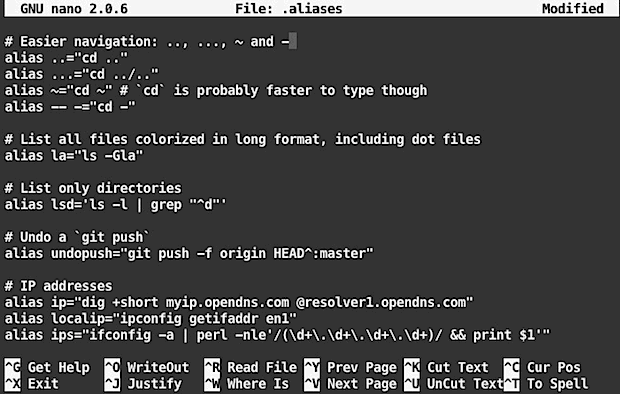Mac commands are rarely unique: most of them are inherited from Unix operating systems. If you're familiar with one of the common Linux or Unix-like operating systems, you probably know all the basic MacOS commands you'll need. Uniquely MacOS Commands. These commands are found only on Mac platform (and not Linux), some originating from BSD.
- Plutil Property list utility pmset Power Management settings popd Restore the previous value of the current directory. pr Convert text files for printing printenv List environment variables printf Format and print data. ps Process status pushd Save and then change the current directory pwd Print Working Directory. q quota Display disk usage and limits r rcp Copy files between machines read Read one line from standard input. readonly.
- Mar 23, 2009 Explore a ton of powerful Mac OS X UNIX commands. This handy, compact guide teaches you to use Mac OS X UNIX systems as the experts do: from the command line. Try out more than 1,000 commands to find and get software, monitor system health and security, and access network resources.
- OS X puts more than a thousand Unix commands at your fingertips—for finding and managing files, remotely accessing your Mac from other computers, and using freely downloadable open source applications. If you're an experienced Mac user, this updated edition teaches you all the basic commands you need to get started with Unix.
- OCLC Number: 468730054: Notes: Title from title screen. Description: 1 online resource. Contents: Introduction xix Chapter 1: Starting with UNIX on Mac OS X 1 About FreeBSD, NetBSD, and OpenBSD 2 Finding Mac OS X Resources 4 Focusing on Mac OS X Commands 4 Finding Commands 5 Command Reference Information in UNIX 6 Summary 9 Chapter 2: New to Mac OS X? 11 What Is Mac OS X UNIX.
A command prompt is a non-graphical interface that allows you tointeract with your operating system. At the command prompt, you entercommands by typing their names followed by options and arguments. Mostmodern computers use a graphical user interface (GUI),which allows users to more intuitively access programs anddocuments. However, some programs and commands are still onlyavailable only through a command prompt. To access the command prompt,follow the instructions appropriate to your operating system.

Windows
To access the command prompt in Windows, in Windows 7, click theStart button and enter cmd. In other versions,from the Start menu, select Run... and thenenter cmd.
Unix Terminal Commands Mac Os X


Unix Commands For Mac Os X64
For information about commands you can use in the Windows commandprompt, see ARCHIVED: What are some examples of common DOS commands?
Mac OS X
Mac OS X is built on a version of Unix calledDarwin. To access the Unix command prompt in Mac OS X, openthe Terminal application. It is located by default insidethe Utilities folder, which in turn is inside theApplications folder.

For information about Unix commands, see Introduction to Unix commands.

Windows
To access the command prompt in Windows, in Windows 7, click theStart button and enter cmd. In other versions,from the Start menu, select Run... and thenenter cmd.
Unix Terminal Commands Mac Os X
Unix Commands For Mac Os X64
For information about commands you can use in the Windows commandprompt, see ARCHIVED: What are some examples of common DOS commands?
Mac OS X
Mac OS X is built on a version of Unix calledDarwin. To access the Unix command prompt in Mac OS X, openthe Terminal application. It is located by default insidethe Utilities folder, which in turn is inside theApplications folder.
For information about Unix commands, see Introduction to Unix commands.
Unix
Unix Commands For Mac Os X 10 11 Download Free
When you log into a Unix computer, your shell begins to runand provides you with a command prompt. The command prompt'sappearance varies depending on the shell you're using. For informationto help you select a shell, see About Unix shell differences
Mac Os Shell Commands
For information about Unix commands, see Introduction to Unix commands.
